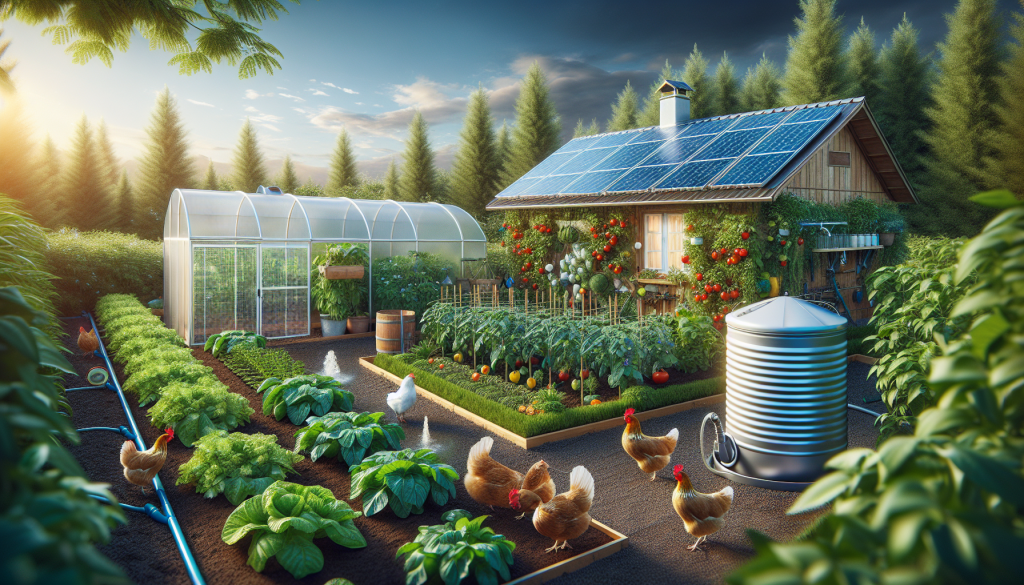
Achieving Backyard Self-Sufficiency: Your Guide to Sustainable Living
In an era where sustainability and self-sufficiency are becoming increasingly crucial, transforming your backyard into a self-sufficient oasis can be both rewarding and empowering. Whether you’re a seasoned gardener or just stepping into the world of homesteading, creating a backyard that supports your lifestyle with minimal external resources is not only possible but simpler than you might think. This guide will walk you through the steps necessary to achieve backyard self-sufficiency and provide you with practical tips to make your garden a sustainable haven.
1. Start With a Plan
The first step towards backyard self-sufficiency is planning. Begin by assessing the size and layout of your space, understanding sunlight patterns, and identifying any existing resources, such as rainwater collection areas or mature trees that could provide shade or mulch. Mapping out your backyard will enable you to make informed decisions about what types of plants, animals, and structures will thrive best. Many experts, like those highlighted on platforms such as The Self-Sufficient Backyard by Ron Melchiore and Johanna, emphasize an initial focus on planning to maximize productivity and efficiency.
2. Cultivate a Productive Vegetable Garden
A productive vegetable garden is the heart of a self-sufficient backyard. Depending on the climate and available space, you can grow a variety of vegetables, fruits, and herbs. Container gardening offers a versatile solution, especially if you are working with limited space or poor soil conditions. Use pots, hanging baskets, and recycled containers to cultivate everything from tomatoes and peppers to herbs like basil and mint. Implement companion planting to naturally deter pests and enhance plant growth.
3. Incorporate Fruit Trees and Bushes
Fruit trees and bushes are excellent additions to a self-sufficient backyard because they provide a plentiful harvest with relatively low maintenance. Consider planting fruit trees like apple, peach, or pear, and berry bushes such as raspberry, blueberry, or blackberry. As described in several resources on sustainable gardening, these plants offer a rewarding yield year after year, with the added benefit of attracting beneficial insects and birds.
4. Set Up a Compost System
Composting is an eco-friendly way to reduce waste and create nutrient-rich soil. A backyard compost pile or bin can transform kitchen scraps and garden waste into valuable organic matter for your garden. This practice not only bolsters soil fertility but also decreases household waste. Many backyard enthusiasts, like those mentioned in discussions around backyard self-sufficiency, tout composting as a cornerstone of any sustainable gardening system.
5. Harvest and Collect Water Efficiently
Collecting rainwater and using it for irrigation is another step toward achieving backyard self-sufficiency. Install rain barrels under downspouts to capture roof runoff, which can be used to water your garden. Additionally, consider using greywater or setting up drip irrigation systems to conserve water use further. Those who work towards self-sufficiency often point out that water management is integral to reducing dependence on municipal resources.
6. Raise Livestock
If your space and local regulations permit, raising small livestock like chickens or rabbits can significantly contribute to a self-sufficient lifestyle. Chickens provide fresh eggs, and their waste serves as an excellent fertilizer. Rabbits can be raised for manure as well, which is highly beneficial for gardens. These animals can be integrated into a closed-loop system where everything from their waste to their nesting materials becomes a resource for the garden.
7. Explore Renewable Energy Resources
Exploring renewable energy options is another way to enhance your backyard’s self-sufficiency. If possible, consider installing solar panels or a small wind turbine to supply power to your garden or home. Implementing renewable energy sources not only reduces reliance on traditional power grids but also lowers utility costs over time.
8. Create a Pollinator-Friendly Environment
Encouraging pollinators like bees and butterflies is essential for a thriving self-sufficient garden. Planting native flowers and creating habitats for these creatures can increase the productivity of your fruit and vegetable plants. Consider adding bee hotels or a small garden pond to attract beneficial insects and encourage biodiversity.
9. Stay Informed and Build Community
Finally, stay informed and involved with a community of like-minded individuals. Many successful self-sufficient gardeners share their experiences and tips online or through local gardening clubs. Engaging with this community can provide valuable insights, tips, and motivation. Sharing resources, seeds, or produce with neighbors can also strengthen local food systems and advance collective self-sufficiency.
Achieving backyard self-sufficiency is a journey that requires dedication, creativity, and resilience. With careful planning, thoughtful implementation, and a willingness to adapt, you can transform your backyard into a productive ecosystem that provides food, resources, and a nurturing connection to nature. Embrace the path to sustainable living through backyard self-sufficiency and enjoy the numerous benefits it brings to your household and the planet.